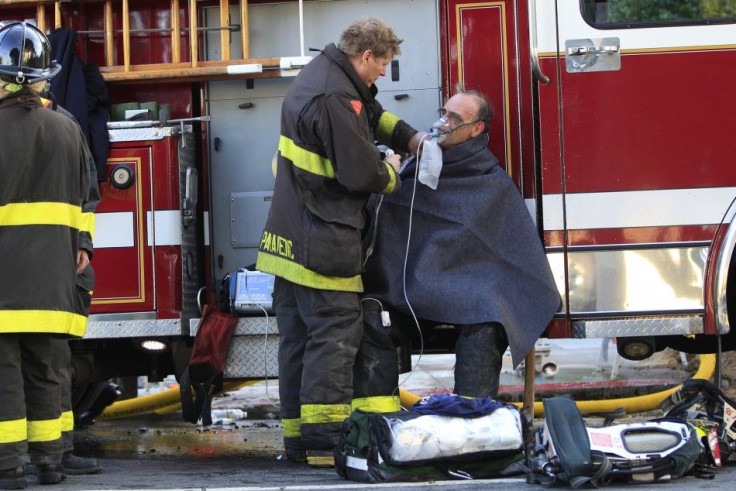Madonna Badger Tragedy: 10 Leading Causes of House Fires and Safety Tips

Madonna Badger, a New York advertising executive, lost three young daughters and her parents in a tragic fire in Stamford, Conn., late Sunday. Badger escaped the fire with a family friend, Michael Borcina, a contractor who had been working on the house.
The cause of the fire remains unknown, but the mayor of Stamford, Michael Pavia, told the New York Times that the fire is believed to have been accidental.
The National Fire Protection Association reports that in 2010 there were 1,331,500 fires in the U.S. with 3,120 civilian deaths and 17,720 civilian injuries. The fires caused approximately $11.6 billion in property damages. Accidental house fires can most often be avoided if homeowners follow safety tips and avoid the leading causes of fires. Be sure your house has fire alarms and that the batteries in them are working properly.
10 Leading Causes of House Fires and Safety Tips:
1. Cooking: The NFPA claims that two-thirds of all house fires are caused from cooking related incidents. Ovens and stoves are often left unattended or left on without the homeowner's awareness. Be sure to stay in the kitchen when you are frying, grilling or broiling food. Turn off the stove even if you leave the kitchen for a short period of time.
2. Smoking: Smoking is another leading cause of house fires. The NFPA advises that all cigarettes should be put out and stored before bedtime. Smokers should also never light a cigarette in bed. The NFPA states that one of four fatal victims in smoking-related fires is a non-smoker.
3. Heating: In 2009, approximately 59,000 house fires were reported related to heating equipment. Many families do not check their furnaces each winter or on a regular basis, but this can open homes up to the possibility of fires. Electrical and fuel-based space heaters can also lead to fires. Be sure to clear space away around heating equipment such as furnaces, fireplaces, wood stoves and portable heaters.
4. Fireplaces: In the winter, fires started in the fireplace sometimes cause a larger house fire. Problems with fireplaces often occur if they are not properly cleaned or maintained or if the fires are left unattended. Be sure to follow fireplace safety.
5. Dryers and Washing Machines: From 2003 to 2006, one in 23 homes reported dryer and washing machine related fires to the NFPA. While there have been cases of sheets lighting on fire within a dryer, it is much more common for fires to be caused by improper ventilation. Be sure to clear the lint from your dryer, have your machines installed by professionals and use ventilation to ensure proper air flow.
6. Electrical: Another leading cause of house fires is electrical-related incidents, most often related to over-used extension cords or electrical overloads. Be sure to have an electrician check the wires in your home and to perform an annual checkup on the wiring of your home.
7. Portable Generators: Generators are often used during power outages, but if used improperly there is a risk of death by carbon monoxide positioning and house fires. Consumers should be sure generators are properly ventilated and that the exhaust cannot enter the home through doors or openings in the building.
8. Candles: The NFPA estimated an average 13,000 fires per year started by candles. Open flames and candles should never be left unattended. It is easy to forget about lighted candles and the fire can catch a curtain, sheet, or plant nearby if not closely watched. Be sure to put out candles when you leave a room and never forget to put out candles before you go to sleep.
9. Christmas Trees: The NFPA released a report that house fires caused by Christmas trees are often more serious than average fires. One in 18 Christmas tree-related fire resulted in death between 2005 and 2009, while in normal fires, only one in 141 fires resulted in death. To avoid the potential dangers associated with Christmas Trees, the NFPA advises that homeowners keep their tree well watered, use unbroken or unworn lights, avoid using candles and always turn off the lights before leaving the home or going to sleep.
10. Children playing with fire: It is crucial to teach children about fire safety. Some children will play with lighters or matches and accidents can easily happen. Never leave children unattended near candles or with matches or lighters.
For more information about leading causes of fires and safety tips, be sure to check out the National Fire Protection Association's website.
© Copyright IBTimes 2024. All rights reserved.





















